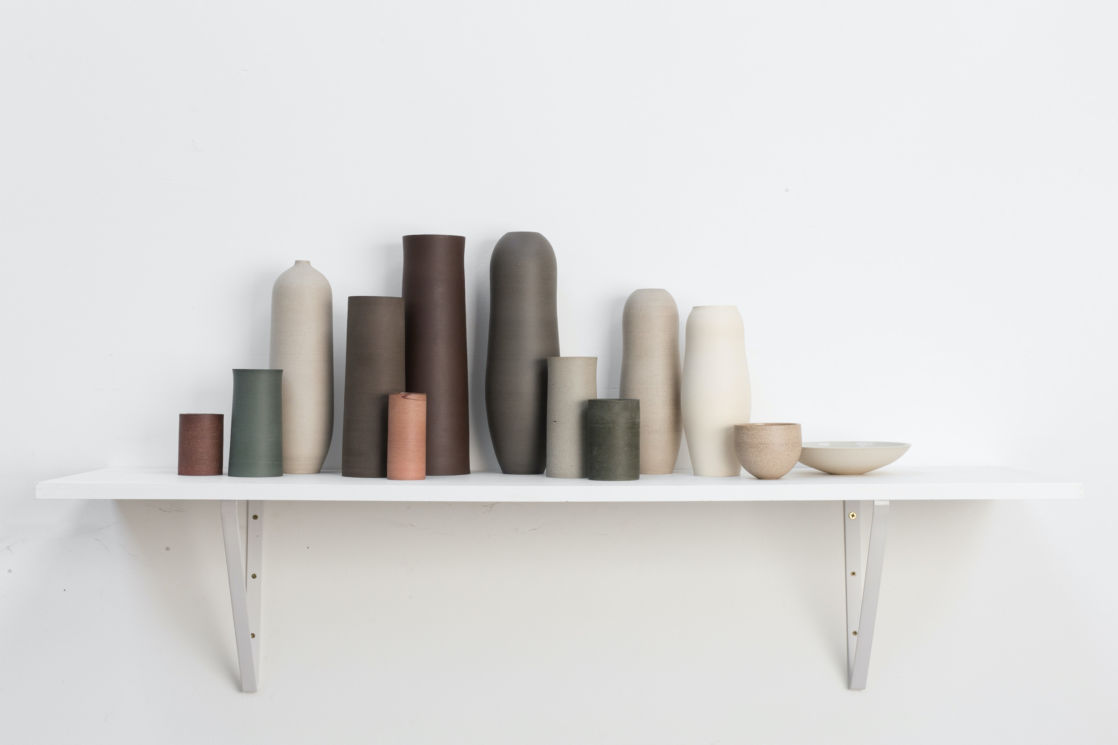Welcome to Ceramic Review
Ceramic Review is the magazine for contemporary and historical ceramics, ceramic art and pottery.
Ceramic Review Issue 334
July/August 2025
Ceramic Review is the magazine for contemporary and historical ceramics, ceramic art and pottery.
July/August 2025
Luke Eastop is a third-generation ceramicist who creates elegant forms in neutral tones. He tells Annie Le Santo the story of his clay heritage and setting up his own practice
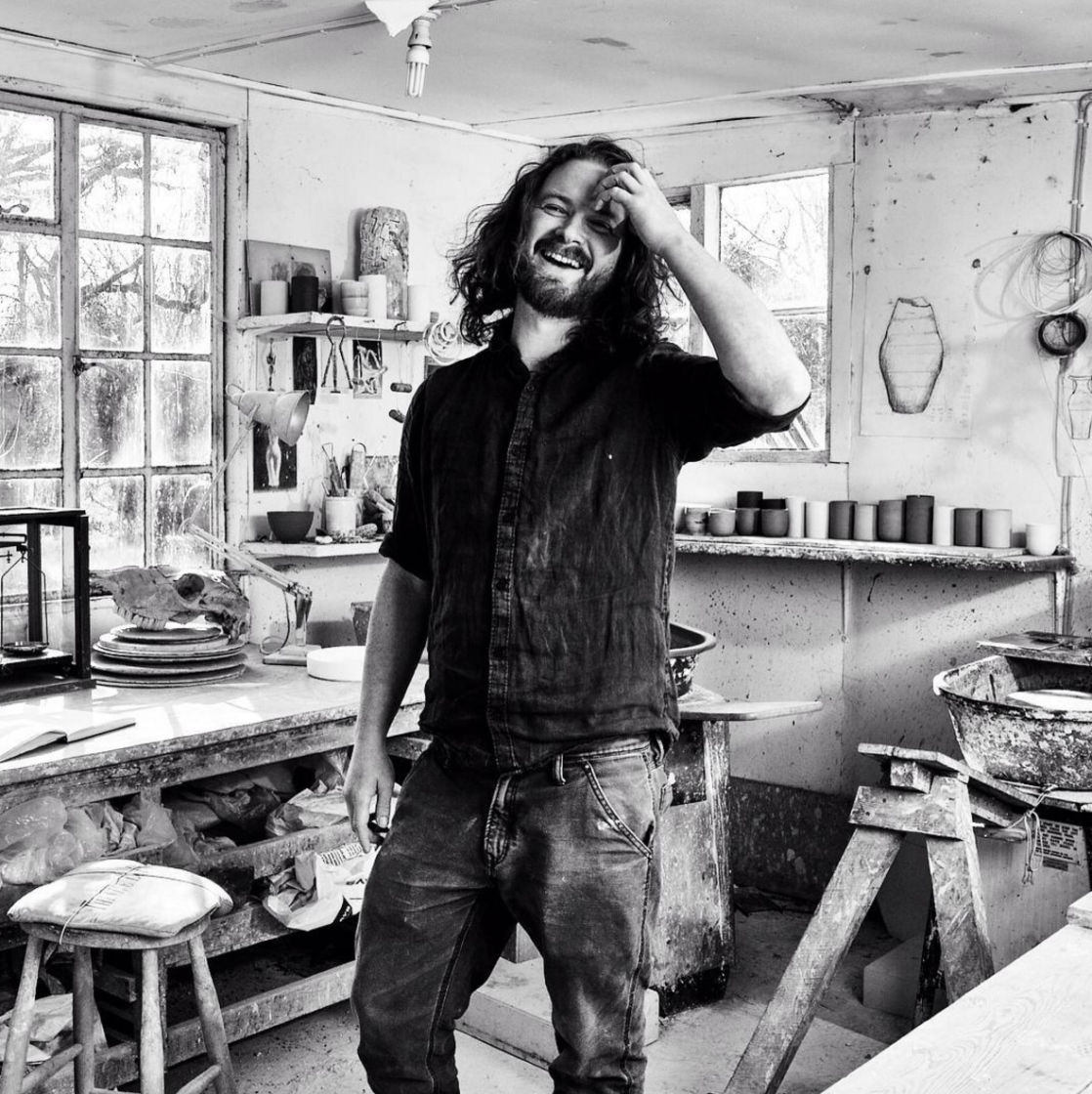
Luke Eastop grew up surrounded by pots. Photographs exist of him as a child sitting on a lawn with two ‘penguin-shaped’ vases that his late grandfather – the respected ceramicist Geoffrey Eastop – created in the 1980s. Deep-rooted family connections to clay have been present for all of Luke’s life, but his journey to ceramics remains one that is uniquely his own.
The terraced streets of Catford, southeast London, were the unusual backdrop for a creative upbringing. His father, a public arts commissioner and also a ceramicist, and his mother, a therapist, frequented exhibition openings and decorated the family home with a variety of different artwork. ‘Growing up in a place considered quite dreary and downtrodden engendered a certain pride,’ Luke comments.
In contrast, the rural setting of Ecchinswell in Hampshire, where his grandfather Geoffrey lived and worked, also contributed to shaping Luke’s future. ‘My grandpa was a huge presence that reached all our extended family members,’ he explains. ‘I was aware that not everyone’s grandpa was a potter, but ceramics and clay felt like a totally normal part of life for me.’
CREATIVE PATH
It is easy to think that Luke was destined to be a studio potter from the get-go. However, his first experience of creating a pot aged seven was enough to put him off until adulthood. ‘I was throwing an egg cup and it was all going well until I went too far and made a hole in the bottom,’ he says. ‘The weight of my family’s history with ceramics meant that I really wanted to do well and this planted the seed of wanting to overcome the challenge. However, pottery was something that my dad and grandpa did, I never really imagined creating pots myself for a living.’
As a teenager, Luke explored alternative creative paths. He painted and was fascinated by graffiti, which developed into an interest in typography and eventually a career in graphic design. At the age of 27, he made the move to train as a chef and became consumed by this engrossing lifestyle for a number of years. ‘After a while, you become institutionalised,’ he says. ‘You work long hours, then have a few days off and these are spent preparing to go back to work. I knew the time was coming to return to design, but I also knew I didn’t want to sit behind a computer all day.’
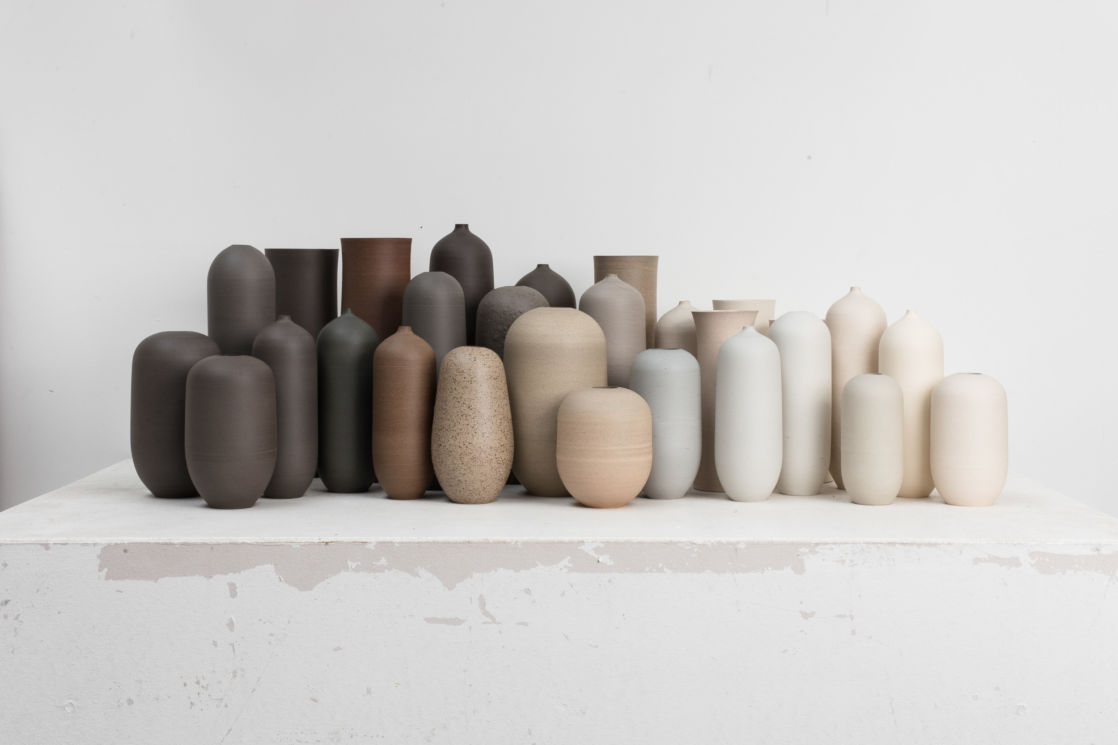
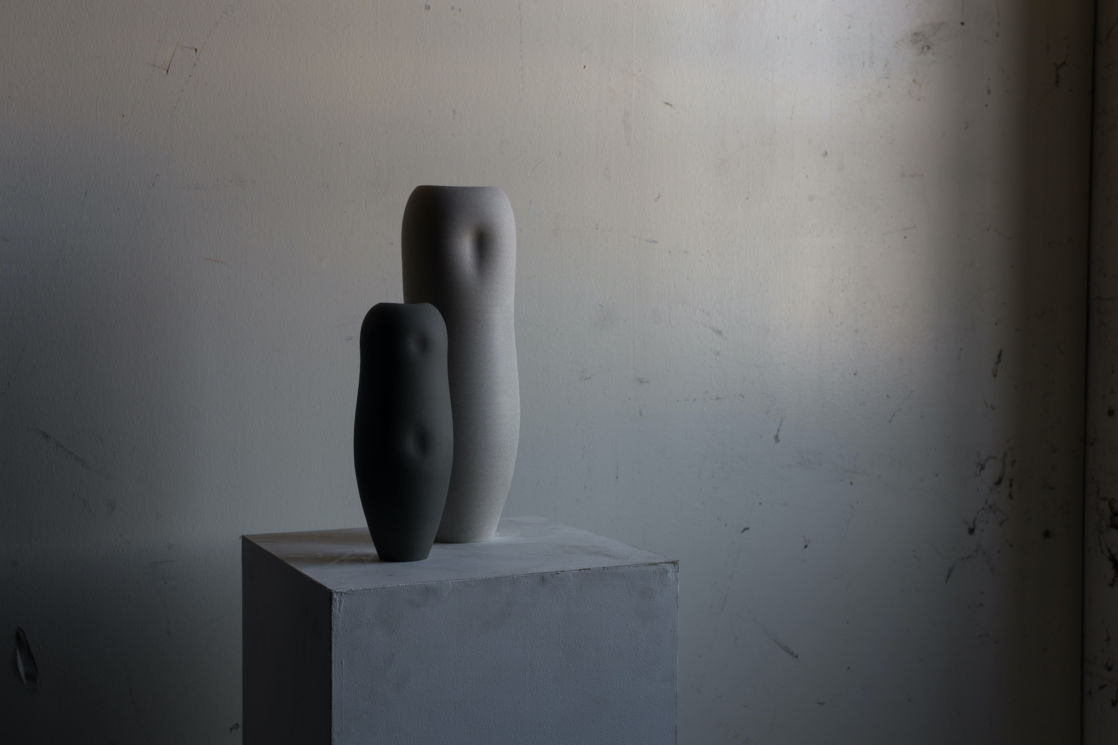
Despite knowing he wanted to work with his hands, he still didn’t consider ceramics as an option. He tried woodworking and began thinking about producing furniture. Eventually, while speaking with his grandfather, he became fascinated by ceramic production processes, such as slip-casting. ‘I remember telling him that I don’t like things that are shiny and asked him to explain to me how he would make something matte. These kinds of conversations started happening regularly, but the idea that I was going to settle on ceramics still sneaked up on me,’ he says.
TURNING POINT
Around the time that Luke found himself at this creative crossroads, his grandmother Pat passed away. Displeased with the idea of Geoffrey living alone, Luke and his father made the decision to visit the Ecchinswell home every weekend and reignite the pottery. Luke received ceramics books for Christmas that year, and he and his father spent their Christmas Day walk discussing plans for the pottery. Devastatingly, hours after returning home they received news of Geoffrey’s passing. ‘My dad and I had already built up this momentum and had dates in the diary to go to the pottery, so we made the decision to stick with it despite everything,’ Luke says. ‘After a few weekends making pots with my dad, I was hooked. It became a way of grieving for both of us, spending time in grandpa’s space together.’
Questions were raised about what to do with the house long-term and Luke welcomed the opportunity to escape the city to embrace his new-found passion full-time. He moved in and dedicated himself to learning everything he could, guided by Geoffrey’s studio. ‘There was something magical about my grandpa’s house and the pottery attached to it. He had turned one of the front rooms into a showroom and there were pots everywhere,’ he says. ‘When I was learning to make bowls, I walked around looking at the different examples. There were a pair of simple ones that my grandpa made in the 1970s. Being able to hold them and feel their weight was really special. I remember thinking how he had already been making for 20 years at the point of their creation. There was also a little Lucie Rie bowl that I would hold and try to begin to understand how she had made it.’
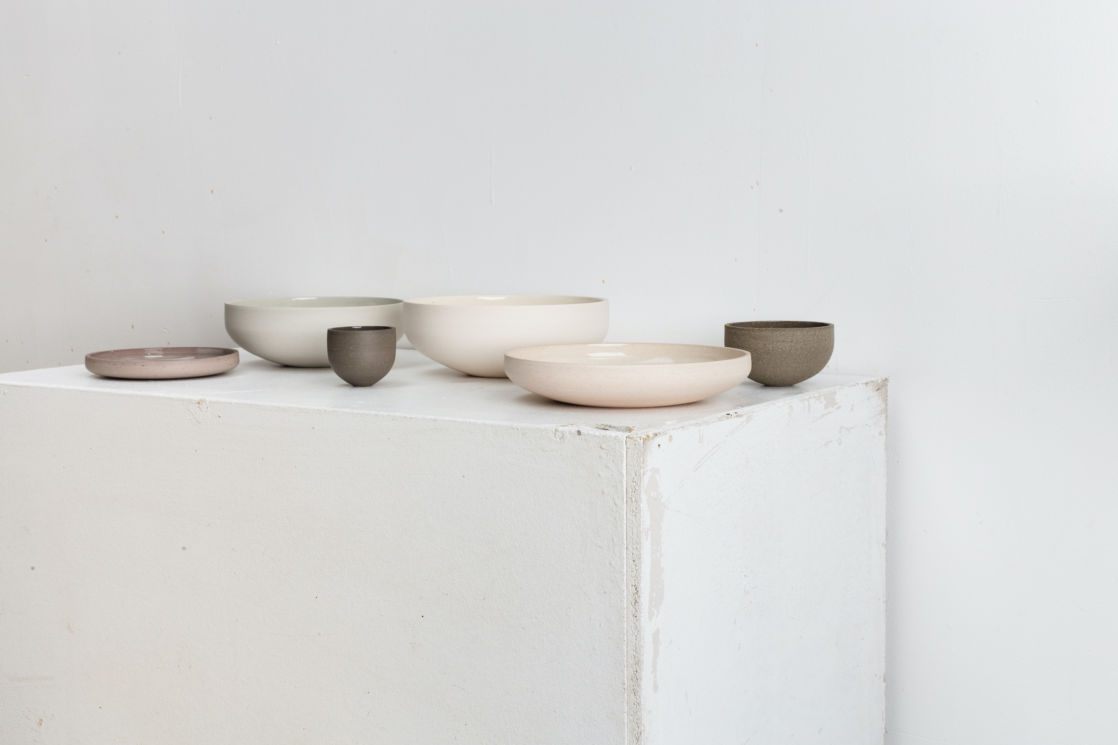
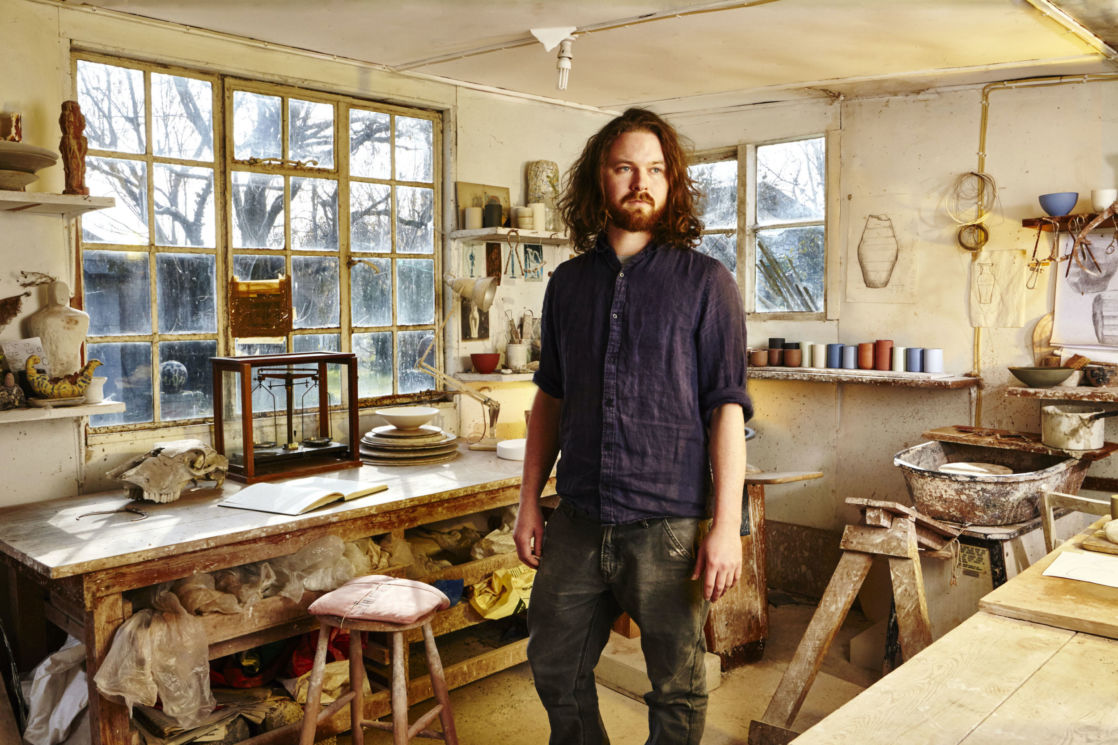
The studio was a treasure-trove of equipment, tools, glazes and history. Alone there, Luke spent months making sense of it. He recalls finding a bucket of glaze labelled ‘1984’. One of the first things he did was test these left-behind glazes, seeing which were still usable. A number of perplexing incidents occurred, such as a ‘grey’ glaze firing into a perfect Dijon mustard shade, but eventually Luke found himself getting to grips with the chemistry of ceramics. Shelves of old oxides provided a playground of experimentation and he discovered that mixing colours into the clay body worked best for him.
While what Luke describes as his ‘mad Victorian scientist stage’ was in full swing, his throwing skills were still catching up. He spent hours producing meticulous drawings of the forms he wished to create on the wheel. ‘Drawing was a way to explore exactly what I was trying to achieve,’ he explains. ‘I also drew up a table of dimensions to monitor and combine the ratios of measurements of different imaginary pieces, then I would pick and choose from this list and attempt to throw them. The interesting thing was that the successful results combined simple geometric ideas and some other kind of human non-logical intervention. That was the key moment I realised each piece needs something surprising about it. It shouldn’t all add up perfectly.’
INDIVIDUAL APPROACH
Everything started progressing incredibly quickly once Luke’s experiments began to produce successful results. His pieces today are consistent, elegant forms that are often displayed together in groupings. The silhouettes created by the different pieces alongside one another echo his long-standing fascination with typography, loosely mimicking the shapes of words. They are received well by a fast-growing following on Instagram, which has led to commissions, fairs, exhibitions and sales.
In the beginning, Luke operated using a ‘catalogue’ system where clients selected multiple combinations of colours and shapes for orders. This turned out to be too complicated and rigid. ‘I was then asked to create work for an exhibition and this was a defining moment as I made one-off experimental pieces,’ he says. ‘Up until this point I had thought of my work as a production kind of thing, but I really enjoyed making the pieces for the exhibition and thought, “Maybe I’m a studio potter after all”. I began to work more like my grandpa than I was ever expecting.’
In September 2017, after two years at Ecchinswell, Luke moved to his own studio space in Margate, Kent, and up-sized again last year. He describes the grander aim of his practice as a continuous ‘investigation into the boundaries of form’ and he intends to keep scaling up his pieces and explore the potential of installations.
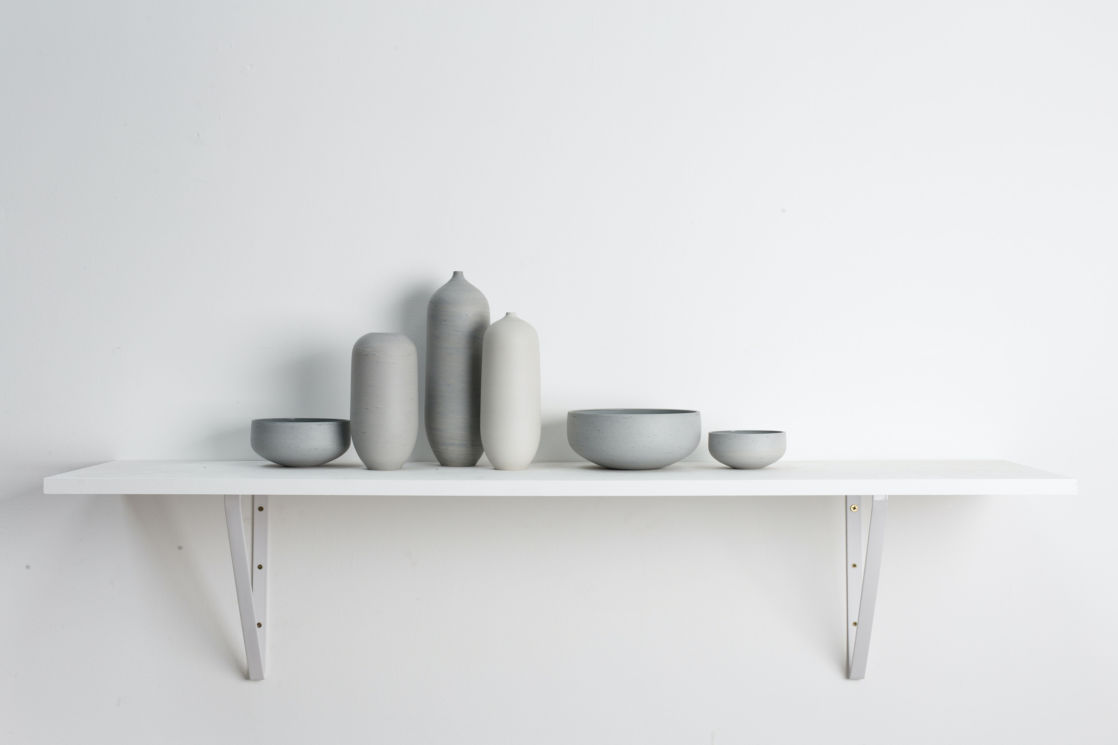
As a third-generation ceramicist, the omnipresence of the pottery created by his father and grandfather has undoubtedly had an impact. ‘I feel like there was an inevitability that my work was going to look similar to theirs because I grew up with it, rather than because I was using my grandpa’s equipment or working in his space,’ he says. ‘My background in design has certainly motivated me but I think the ideas – shapes, colours and forms – that I share with my dad and grandpa were already contained somewhere within me. It’s like a “house style.”’
Luke’s work demonstrates the beauty of this inherited influence combined with his own individual approach. As with many creatives, his pieces exhibit his personality and his boundless desire to completely understand his craft.
For more details visit lukeeastop.co.uk
Images: courtesy of the artist
